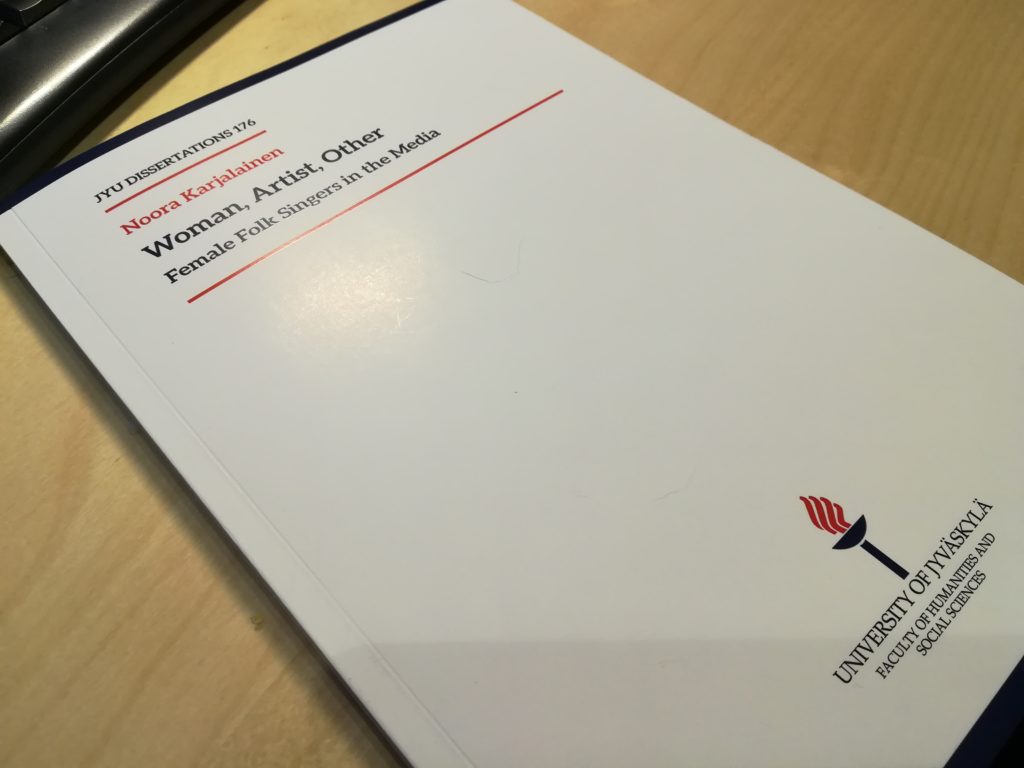Public examination (PhD): Female folk singers in the media

Today I went to Noora Karjalainen’s public examination for her dissertation entitled “Woman, Artist, Other: Female Folk Singers in the Media”. As the title suggests, the study has to do with the media representation of female folk singers, but is approached through the lens of cultural remembering – which I understand as an active process of making sense of media texts based on existing texts (and representations). Basically, we make sense of stuff based on how stuff has been presented to us previously, but our understanding also changes the more stuff we see/hear/experience. The examination was a success, and I was happy to come home with an extra copy of the dissertation, which you can also read online here!
I want to highlight Karjalainen’s concept of the ‘Cosy Other’ here, since I’ve found it interesting ever since I first heard about it in her presenation at a seminar over a year ago. The Cosy Other, shortly put, is one that is simultaneously familiar and foreign; different, but not too different. It differs from how Others and Othering are usually conceptualized – in my own studies, I’ve linked the concept to monstrosity and exclusion, for example. The Other is typically something undesirable, threatening; an outsider. Here, otherness is constructed mainly through gender and musicianship (woman as artist) but also the genre of music (folk in relation to pop music). Additionally, the female folk singers are represented as near-mythical, ones with a special connection to their origins and land; in a way, some of the Othering aspects become glamorised. The ‘cosiness’ then comes from representing these Others in a favourable, intriguing, and perhaps even comforting way (because of nostalgia).
To me, this concept doesn’t only reveal interesting things about how female folk singers are represented in the media, but also seems a fruitful tool for exploring different types of contexts. For example, the opponent, Taru Leppänen, asked how a folk singer’s race or age might influence the ‘Cosy Otherness’ in their media representation. Is being the Cosy Other only possible for certain types of people in specific contexts? If not, how does the way in which the Cosy Other is constructed in these contexts differ? These, to me, are exciting questions that I hope will be explored in the future. Perhaps the Cosy Other could even be applied to how certain types of characters are portrayed in fiction (of course, my first thought is video games…).

